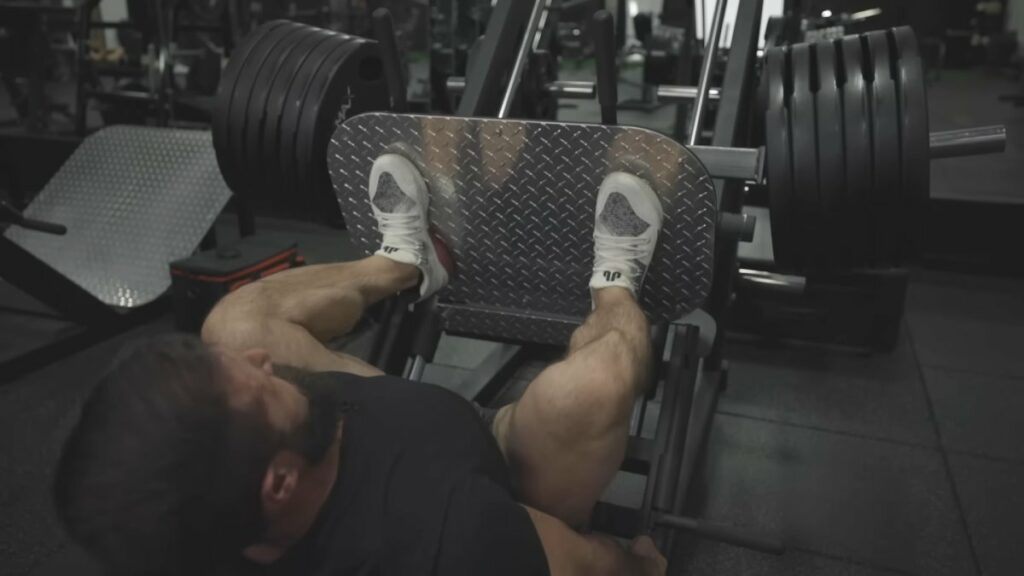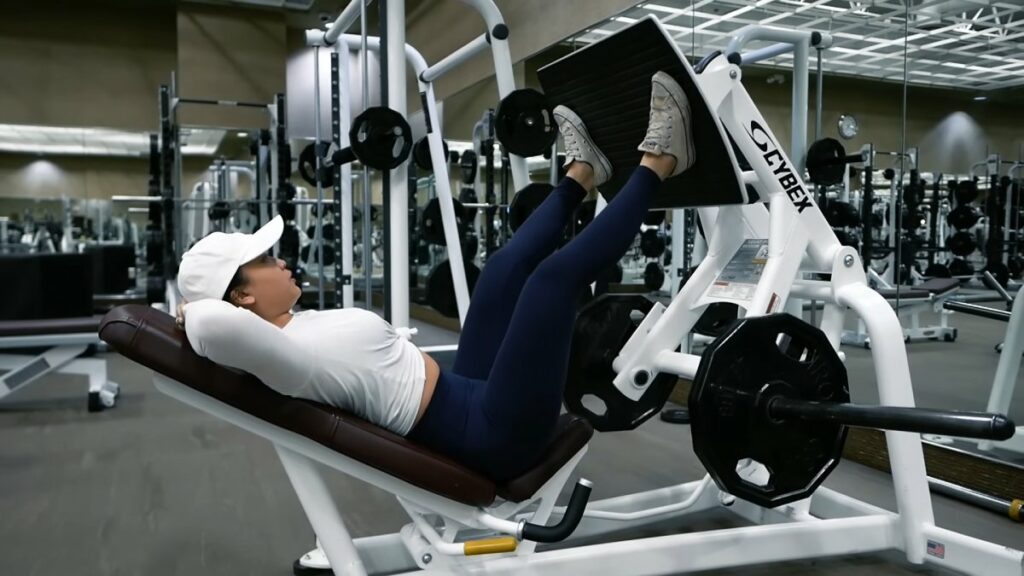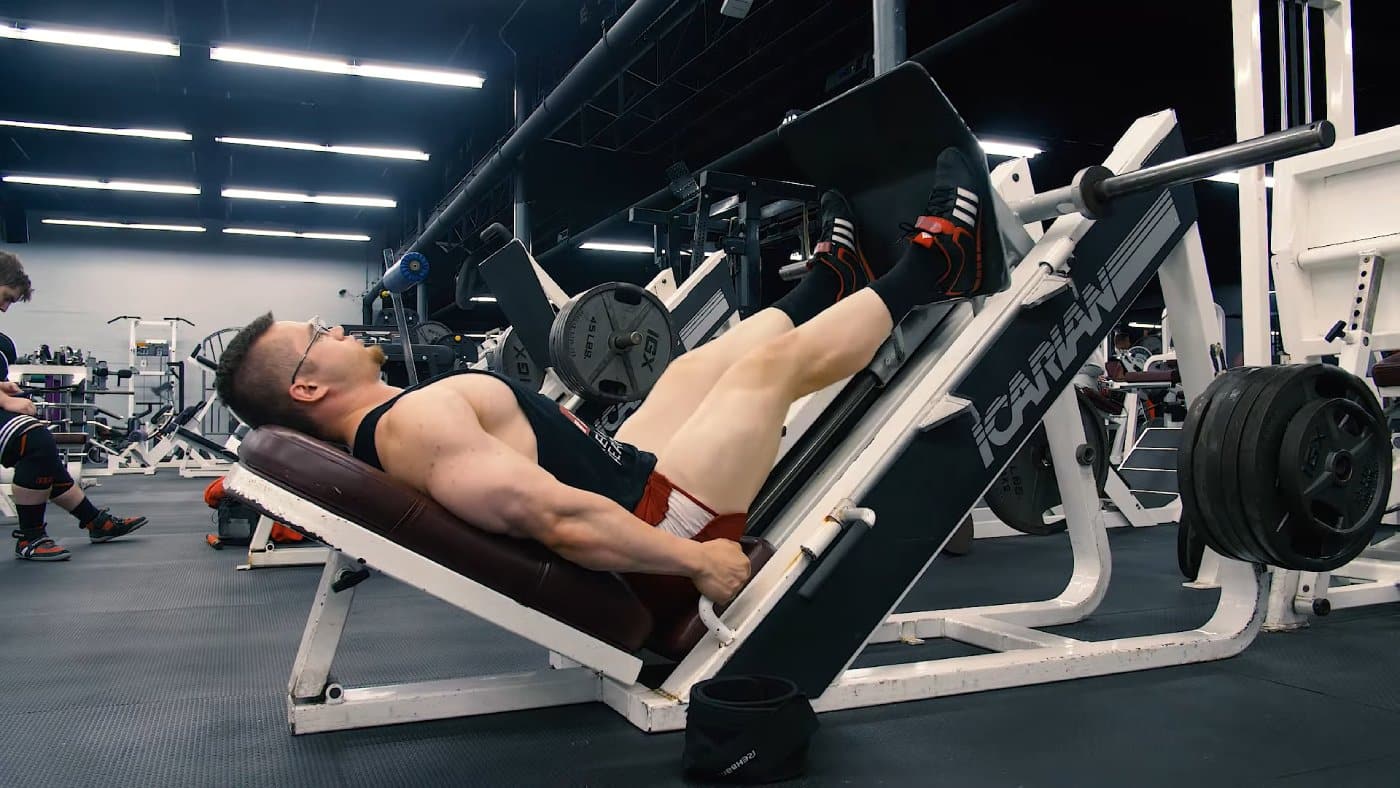How does your body weight influence your leg press strength? What changes can you expect as you age?
This article reveals the surprising ways gender, age, and weight shape your leg press performance.
You’ll learn not just about the averages but how to surpass them, with tips on form and safety. Discover strategies to boost your strength at any fitness level and see how you compare to others in your demographic.
Jump to:
- Gender-Specific Averages: A Comparative Look
- Age-Related Variations: Strength Over Time
- Training Experience: Novice to Pro
- Weight: A Balancing Act of Power
- Average Leg Press Weights for Men
- Average Leg Press Weights for Women
- Importance of Proper Form and Safety
- Training Tips: Elevating Your Leg Press Game
Gender-Specific Averages: A Comparative Look
- Men’s Averages: Generally, an average healthy male can leg press 1.5 to 2.5 times his body weight. For instance, a man weighing 180 pounds might press anywhere from 270 to 450 pounds. However, these numbers can skyrocket in seasoned lifters, with some pushing over 1,000 pounds!
- Women’s Averages: Women, on the other hand, often leg press 1 to 1.75 times their body weight. A woman weighing 130 pounds may comfortably press between 130 and 227.5 pounds. It’s important to remember that these are averages; individual capabilities and goals differ.
Age-Related Variations: Strength Over Time
- Young Adults (18-25): This age group, brimming with vitality, often sees higher averages due to peak physical conditions and muscle resilience. Young adult males and females can often push towards the upper end of their respective average ranges.
- Adults (26-45): Here, we find a mix. Some maintain their strength from younger years, while others might see a slight decrease due to lifestyle changes. However, consistent training can keep these numbers robust.
- Mature Adults (46+): As we age, maintaining muscle mass and strength becomes crucial. The averages might dip a bit, but with regular training, impressive numbers are still achievable. It’s not just about strength; it’s about vitality and longevity.
Training Experience: Novice to Pro
- Novice Lifters: Beginners typically start with lighter weights as they build muscle and learn proper technique. For many, pressing 50% to 75% of their body weight is a good starting point.
- Intermediate Lifters: After months of training, intermediate lifters can often press around 100% to 150% of their body weight, reflecting improved strength and confidence.
- Advanced Lifters: These are the gym veterans. They can often press more than twice their body weight, showcasing the results of dedication and disciplined training.

Weight: A Balancing Act of Power
Body weight significantly impacts leg press performance. A heavier individual generally possesses more muscle mass, potentially translating to greater strength. However, this is not a hard and fast rule, as muscle composition and overall fitness levels vary widely.
Conversely, lighter individuals might find themselves pressing less in terms of raw weight but often excel in relative strength – the ability to move weight in proportion to their body weight.
Average Leg Press Weights for Men

By Weight
In the world of leg pressing, your body weight is a significant influencer. According to Strength Level, here’s how much you should be able to leg press, according to your bodyweight:

- Lightweight Category (<150 lbs): Men in this category typically leg press 1.5 to 2 times their body weight. That means a 150-pound man might press between 225 and 300 pounds.
- Middleweight Category (150-200 lbs): Here, the average leg press ranges from 2 to 2.5 times the body weight. A man weighing 180 pounds, for instance, could be pressing from 360 to 450 pounds.
- Heavyweight Category (>200 lbs): In this range, it’s common to find men pressing 2.5 to 3 times their body weight, with some pushing even beyond that.
By Age
Age isn’t just a number when it comes to strength training. Here’s how it plays out:

- Young Adults (18-25 years): This group often sees the highest averages, thanks to their peak physical conditions, with many pressing impressive weights upwards of twice their body weight.
- Adults (26-45 years): This range is a mixed bag, but many maintain strong leg press numbers, averaging around 1.5 to 2 times their body weight.
- Mature Adults (46+ years): Here, while there might be a natural decline in strength, many still maintain a leg press average of around 1 to 1.5 times their body weight.
By Experience Level
Experience level in the gym correlates strongly with the leg press weights:
- Beginners: Typically press around 50% to 75% of their body weight as they master form and build foundational strength.
- Intermediate Lifters: Often press around 100% to 150% of their body weight, reflecting their growing muscle strength and gym confidence.
- Advanced Lifters: These individuals, thanks to years of consistent training, can press upwards of twice their body weight, and sometimes more.
Leg Press Goals: Body Weight Benchmarks
Setting leg press goals is pivotal for progress. A common benchmark is pressing at least twice your body weight. Achieving this indicates not only strength but also dedication and discipline in your training regimen.
Average Leg Press Weights for Women

By Weight
When it comes to leg pressing, a woman’s weight class can give a good indication of her leg press capabilities. Again according to Strength Level, here’s approximately how much you should be able to leg press, according to your body weight:

- Lightweight Category (<130 lbs): Women in this range often leg press approximately 1 to 1.5 times their body weight. For instance, a 130-pound woman might press between 130 and 195 pounds.
- Middleweight Category (130-160 lbs): Here, the average leg press might range from 1.5 to 2 times the body weight, meaning a woman weighing 160 pounds could press from 240 to 320 pounds.
- Heavyweight Category (>160 lbs): In this category, women can typically press from 2 to more than 2.5 times their body weight, showcasing significant strength.
By Age
Age plays an important role in determining leg press averages for women:

- Young Adults (18-25 years): This age group, often at the peak of their physical strength, can push towards the upper end of their weight category averages.
- Adults (26-45 years): Women in this bracket maintain a good level of strength, with many pressing around 1 to 1.75 times their body weight.
- Mature Adults (46+ years): Strength may slightly diminish with age, but many women continue to press impressive weights, averaging around 75% to 1.5 times their body weight.
By Experience Level
Experience in the gym significantly influences leg press performance:
- Beginners: New to strength training, beginners often start by pressing around 50% to 75% of their body weight, focusing on form and gradual strength building.
- Intermediate Lifters: With some training under their belt, intermediate lifters often press about 100% to 125% of their body weight.
- Advanced Lifters: These experienced individuals can press upwards of 1.5 times their body weight, thanks to their dedication and consistent training.
Leg Press Goals: Body Weight Benchmarks
Setting realistic and achievable leg press goals is crucial. A common goal for many women is to press at least their body weight, a significant marker of strength and fitness. Progressing beyond this to 1.5 times body weight is an excellent aim for more advanced lifters.
Importance of Proper Form and Safety

The Cornerstone of Effective Training: Maintaining Proper Form
Embracing proper form in leg press exercises isn’t just a recommendation – it’s a necessity. It’s the difference between effective muscle building and a one-way ticket to injury town. Here’s how to ensure your form is on point:
- Align Your Feet: They should be shoulder-width apart on the platform. This isn’t just a random placement; it’s your foundation of stability and power.
- Mind the Knee Bend: A 90-degree angle is your sweet spot. Anything less, and you’re cheating your muscles. More, and you’re inviting knee trouble.
- Back and Hips Alignment: Keep your back and hips flat against the seat. This isn’t just for comfort – it’s critical for protecting your spine.
- Controlled Movements: Resist the temptation to slam weights. Lower the platform slowly, then press with steady, controlled power.
- Breathing Technique: Exhale while you press; inhale while returning. It’s not just about oxygen; it’s about maintaining internal pressure and stability.
Safety Precautions: Your Shield Against Injury
Safety in the gym is like a seatbelt in a car – non-negotiable. Here are some safety protocols to embed in your routine:
- Never Skip the Warm-Up: Jumping into heavy leg presses cold is like driving a car without oil. Warm up those muscles to prepare them for what’s ahead.
- Avoid Overloading: Lifting your ego instead of appropriate weights leads nowhere good. Choose a weight that challenges but doesn’t overwhelm.
- Use Safety Stops: These are not there for decoration. They’re your fail-safe, preventing the weight from going beyond a safe range.
- Listen to Your Body: It’s the best communicator you have. Pain, discomfort, or unusual strain? That’s your cue to stop and reassess.
Training Tips: Elevating Your Leg Press Game
Build a Foundation with Compound Movements
Your leg press prowess doesn’t start at the machine; it begins with foundational strength. Incorporate compound movements like squats and deadlifts into your routine. These exercises work multiple muscle groups, fostering the strength and stability needed for a powerful leg press. Remember, variety is the spice of life and the secret ingredient in your training regime.
Emphasize Progressive Overload
Progressive overload is not just a fancy term; it’s the cornerstone of strength improvement. Gradually increase the weight you press, ensuring each increment challenges your muscles just enough to adapt and grow stronger. It’s like climbing a ladder – one step at a time, always moving upwards.
Mind-Muscle Connection: Feel Every Move
Engaging your mind with your muscles during the leg press can significantly enhance performance. Focus on the muscles you’re working. Visualize them contracting and releasing with each press. This mental engagement ensures you’re not just going through the motions but truly maximizing each movement.
Diversify Your Leg Press Technique
Variety is key. Don’t just stick to one leg press style. Experiment with different foot placements – narrow stance, wide stance, high, and low on the platform. This variation targets different muscle groups within your legs, leading to a more comprehensive strength development.
Incorporate Unilateral Training
Balance is crucial, and unilateral training helps achieve it. Include single-leg presses in your routine to ensure both legs are equally strong and capable. This not only improves overall performance but also reduces the risk of injury caused by muscle imbalances.
Prioritize Recovery and Nutrition
Strength gains happen outside the gym too. Prioritize recovery through adequate sleep, rest days, and mobility exercises. Nutrition is equally vital; fuel your body with a balanced diet rich in proteins, carbohydrates, and healthy fats to support muscle growth and repair.














